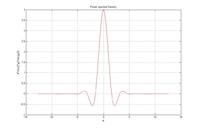Follow along with the video below to see how to install our site as a web app on your home screen.
Note: This feature may not be available in some browsers.
Guys,
I'm still confused to solve the following question :
View attachment 65049
View attachment 65050
View attachment 65051
Regards
Linspire

How to solve Question (ii) ?
what's the properties you applied ?
How about question (iii) and (iv) ?
For part (iii), I dont get it why the solution gives (4 sinc (2W)) , is it because of P2(t) term ?
For part (iv), why the solution ignore partial fraction the 3rd term which Fourier transform table shown below
View attachment 65071